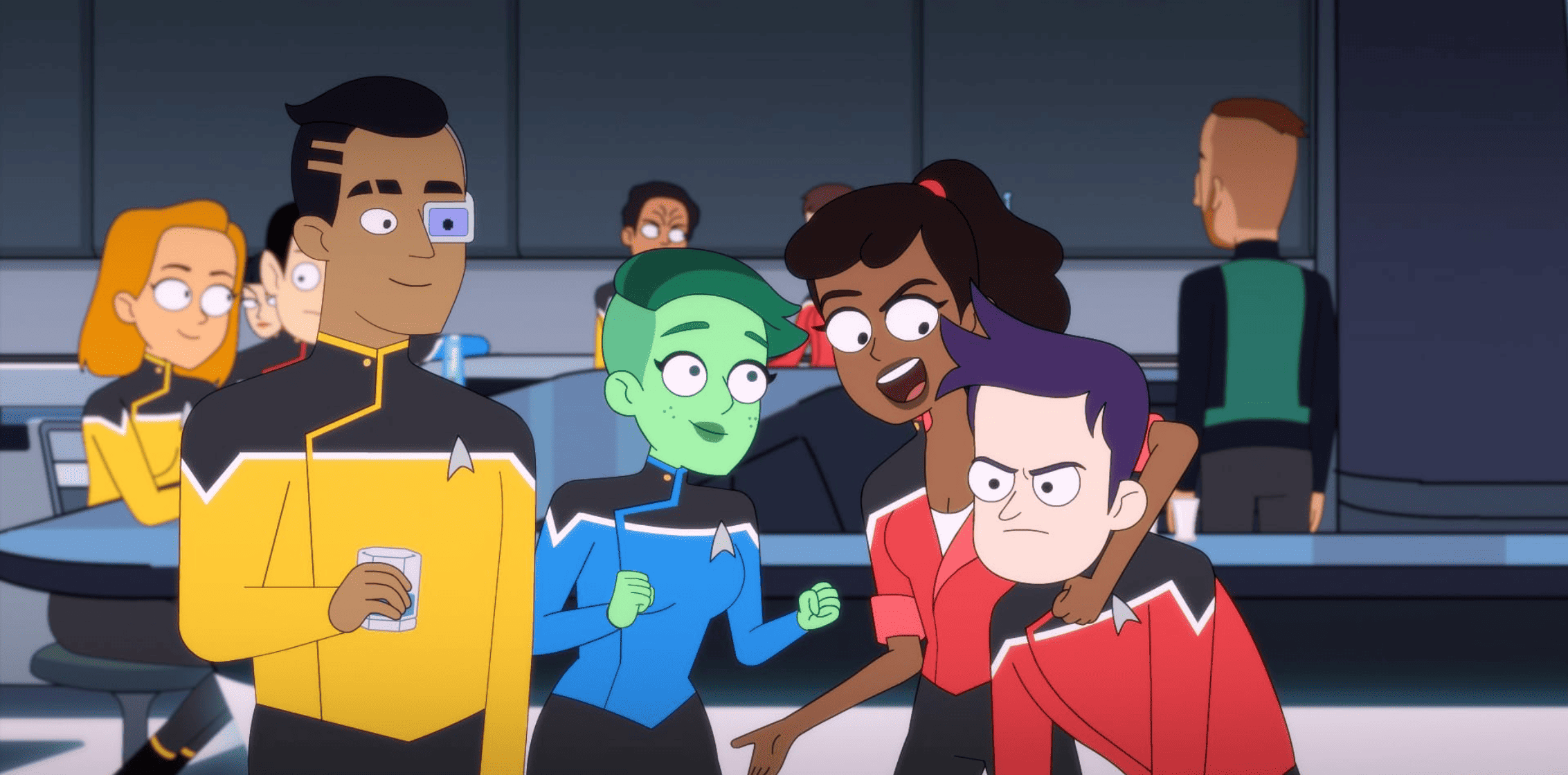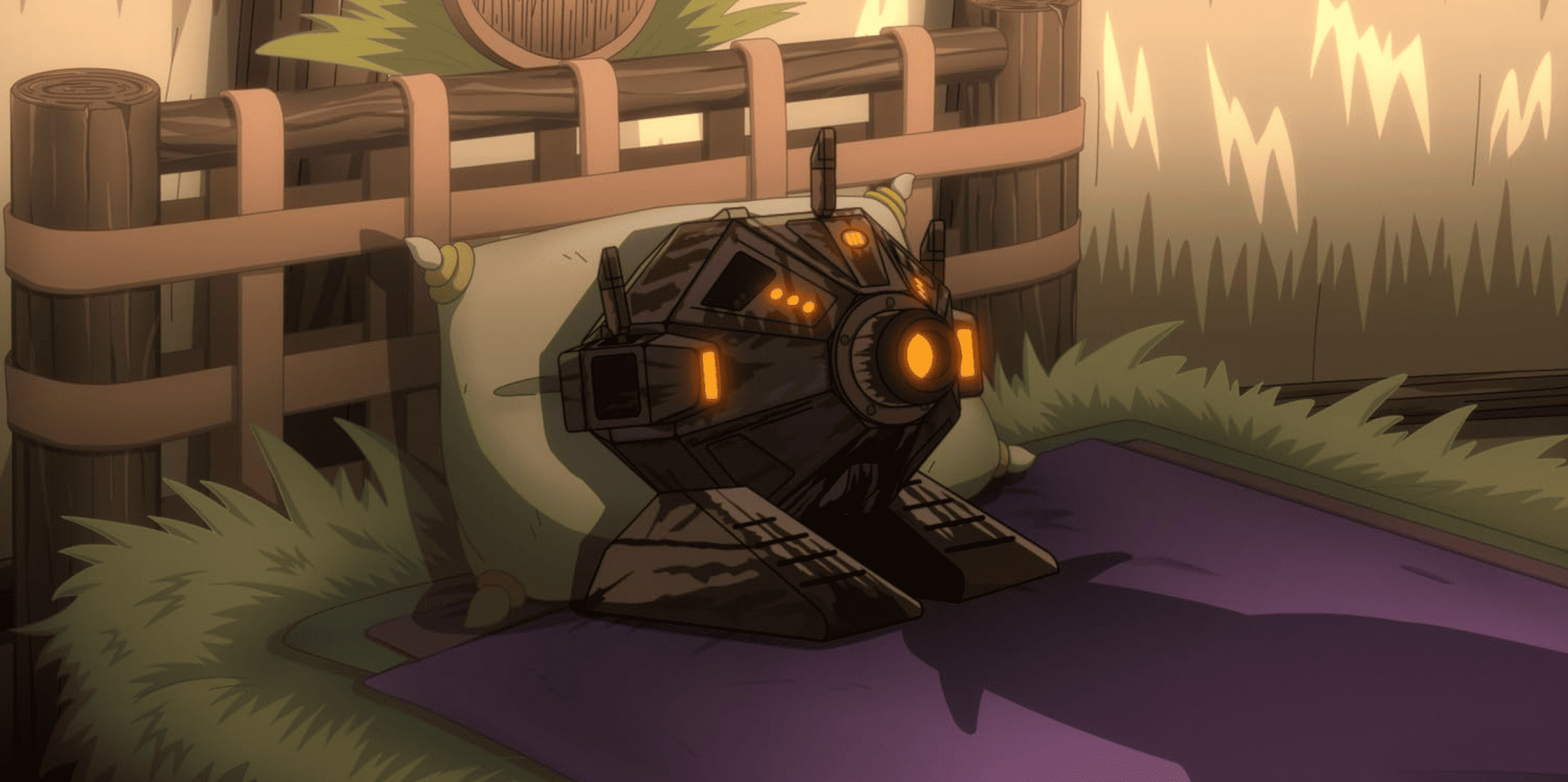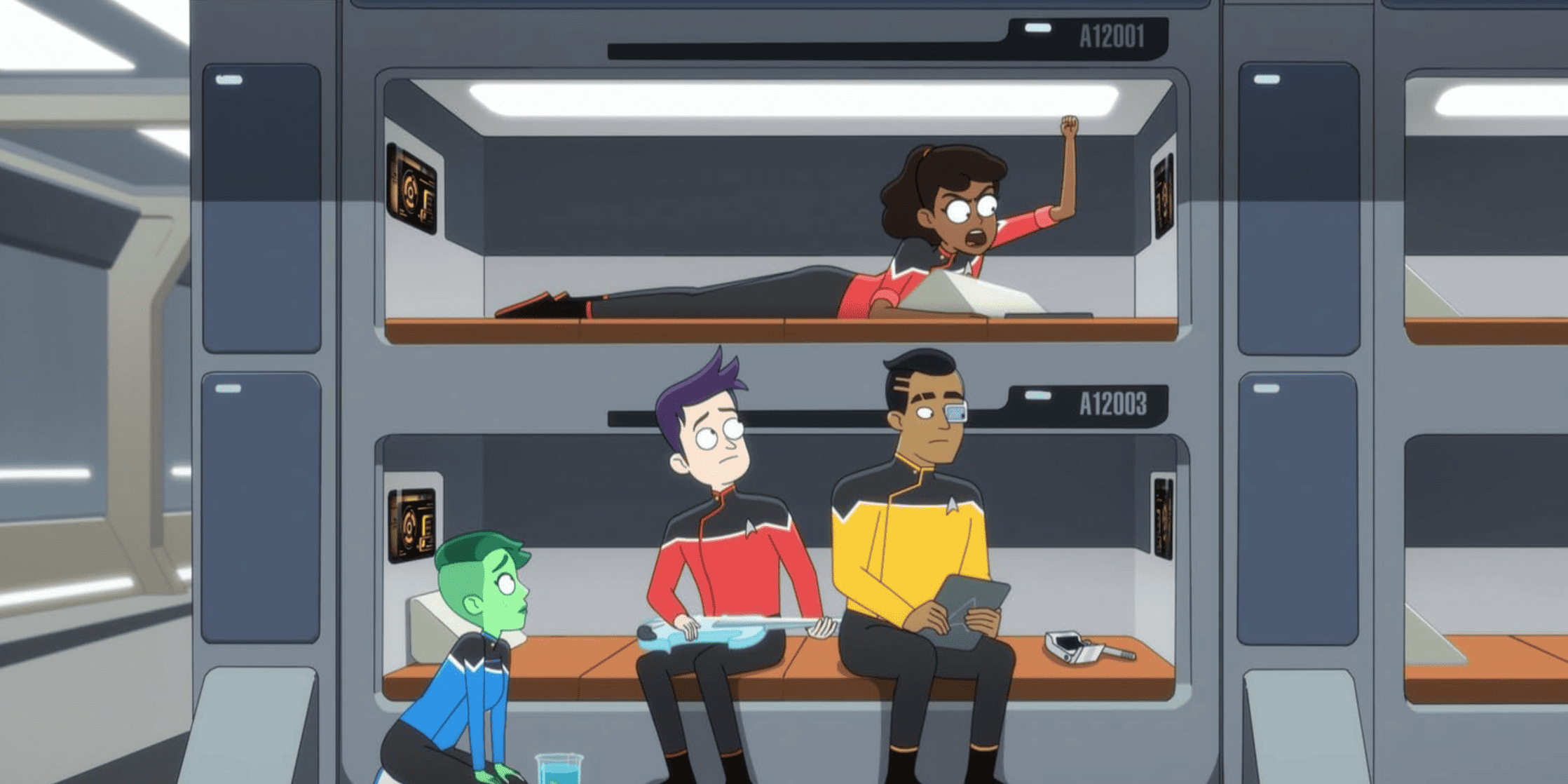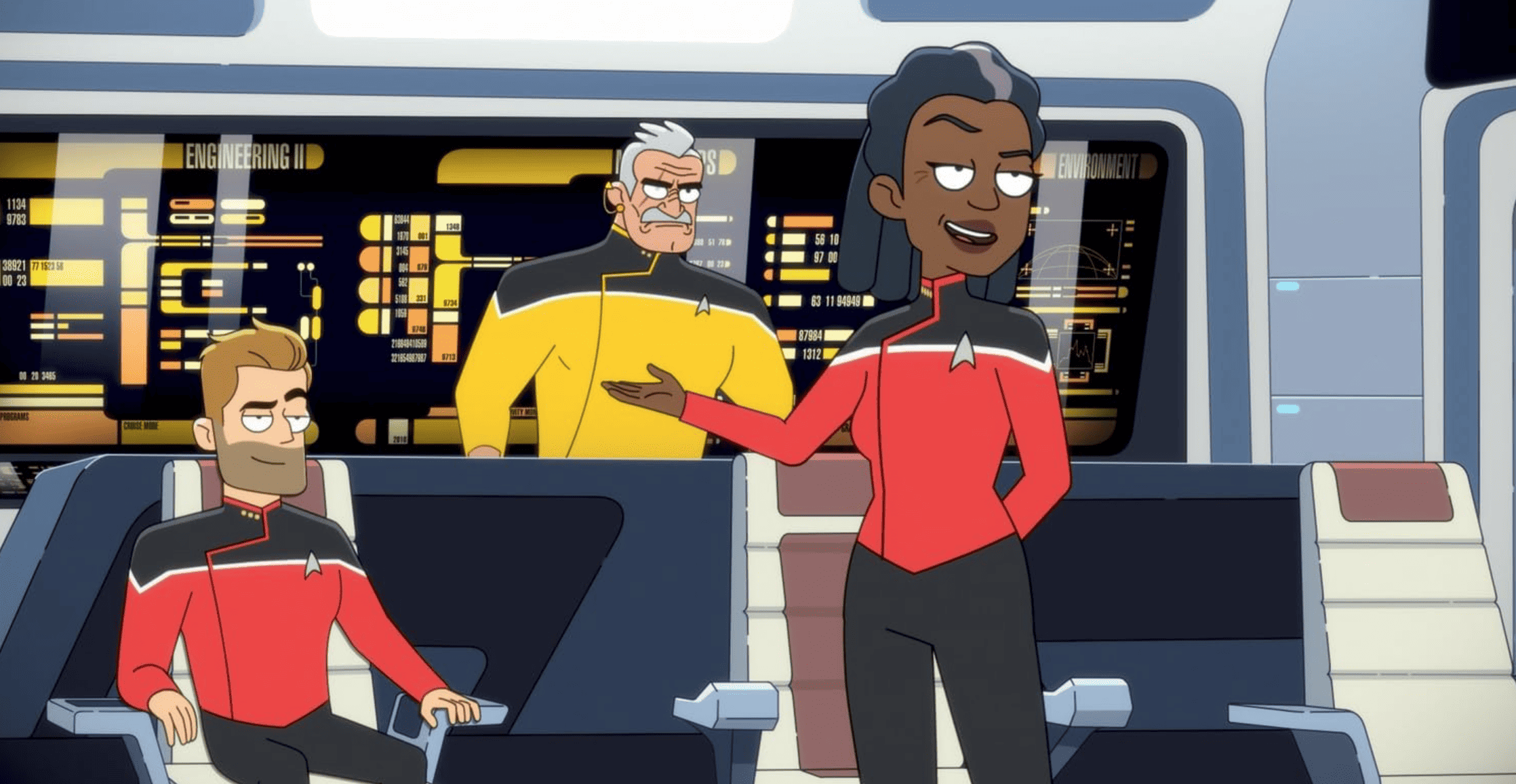
“Star Trek: Lower Decks” is not the first time the franchise has gotten the animated treatment. After the original series was canceled, the story of Captain Kirk’s Enterprise continued with “Star Trek: The Animated Series,” but while that show’s canon status remains iffy, “Star Trek: Lower Decks” does not. The series began airing in 2020 and takes place in the year 2380, which is roughly a decade after the events of “Star Trek: The Next Generation” transpired.
Timeline-wise, that would put “Lower Decks” almost near the end. That means the events of every show and movie have already happened by the time we meet the crew of the Cerritos, the ship in “Lower Decks,” which sounds daunting to a newcomer. In reality, “Star Trek: Lower Decks” is the best entry point to the series. Take it from me, a guy who’s attempted to get into “Star Trek” several times.
Why Not Another Show?

There are a couple of other candidates that could serve as on-ramps to “Star Trek”, but they each come with caveats. “Star Trek: The Original Series,” or TOS as it’s referred to colloquially, is the logical choice. Yet, many won’t appreciate the limited visuals and slower pacing, despite the beautiful remaster. Other things like the show’s blatant misogyny — in the first episode, Captain Pike says he can’t get used to women being on the bridge — don’t hold up to today’s standards. Though if you can get past it, TOS is worth watching simply because it establishes a lot of the lingo, tech, and tropes used later in other series.
“Star Trek: Enterprise” is another good choice, happening at the very beginning of the “Star Trek” timeline, but it’s not highly regarded as one of the franchise’s best series. You could also try “Star Trek: Discovery,” which introduces younger versions of Captain Pike (Anson Mount) and Spock (Ethan Peck). “Discovery” can be great at times, but the series’ serialized nature takes focus away from what makes “Star Trek” great: exploration. In a lot of ways, “Discovery” stands apart from the larger “Star Trek” universe, though that’s not necessarily a compliment.
The final candidate is “Star Trek: Strange New Worlds,” which takes place a few years before the command of the Enterprise is handed over to Captain Kirk. This show, arguably one of the best shows currently on TV and a great reboot, brings back the old, episodic wonder of “Star Trek,” raising the bar of what’s expected of a “Star Trek” show with every episode. Despite being excellent, those who are unfamiliar with the franchise may be turned off by the fast pace of the show, which assumes you have a good grasp of the world. It’s best to watch other “Star Trek” series first before watching “Strange New Worlds” so you can get the full experience — a show this good deserves it.
Why Lower Decks?
When I was going through my first bout with COVID-19 in the middle of 2022, I was desperately looking for something to watch while I fused to the couch, and “Lower Decks” looked promising. There were two seasons and a lot of buzz surrounding the third one, so I dove in. I’ve seen the entire series three times now.
The Lower Deckers

What makes it so special? For one, the premise. Unlike other “Star Trek” series, where the focus is on the captain and the bridge crew, “Lower Decks” follows the lives of four low-level ensigns aboard the Cerritos: Ensigns Beckett Mariner (Tawny Newsome), Brad Boimler (Jack Quaid), D’Vana Tendi (Noel Wells), and Sam Rutherford (Eugene Cordero). Despite often getting the worst jobs, bunking in a cramped corridor, and dealing with those delta shift jerks, the group of friends always step up when they’re needed.
They may not be the most professional, buttoned-up personnel in Starfleet, but they’re Starfleet through and through. Beckett is the badass with a penchant for violating authority and a tough outer shell, but she has a very strong moral compass and is fiercely loyal to those in her inner circle to a fault. Boimler is a teacher’s pet with big ambitions to become a legendary captain; his incredible knowledge of Starfleet and quick thinking get the crew out of a pickle more often than not. Tendi is an Orion with positive, bubble positivity, but she’s handy with fists, phasers, and a tricorder; she’s a triple threat but really just wants to geek out about science with Rutherford. The final member of the crew is a cyborg that frequently suffers from implant malfunctions; he’s arguably the most likable and endearing lower-decker, and he’s also an engineering genius.
The lower deckers may be the focus but “Lower Decks” also spends time getting to know the bridge crew, who are just as flawed as the people they’re leading. I won’t get into all the details, but making fun of the officers is a big part of this show, and there are a lot of those moments.
The Bridge Crew

While the crew of the Cerritos isn’t exploring the far reaches of space or making first contact with alien species, the crew still gets plenty of action. How they deal with an officer being affected by “strange energies” or being interrogated by a tribunal isn’t what Starfleet would consider textbook procedure, but they get it done. The show’s episodic format allows for many surprises, but there is an overarching plot that subtly builds every few episodes without taking over the fun. Like with any “Star Trek” series, episodes can deal with anything from space anomalies to time travel to dealing with species whose way of life is very different, and of course space battles.
The Dumbest Villains
After watching the many Klingon interactions in “Discovery,” it felt like a breath of fresh air to see the Klingon in a new light — their portrayal played up the violence until it became camp. For most of the series, the Pakleds are the Cerritos’ main antagonists, but they’re such a huge joke that it allows the writers to have fun. The real villains are more often members of Starfleet, with the writers obviously using these villains to highlight that Starfleet isn’t as squeaky clean as they present themselves.
The Jokes

“Lower Decks” isn’t a thinkpiece that tackles big societal issues — that’s for Picard and the others — because it focuses more on interpersonal relationships and the emotional issues of the crew. Whether it’s dealing with abandonment, strained mother-daughter relationships, coming back from death, or overcoming stereotypes, “Lower Decks” does have the ability to go beyond simple humor.
Still, even in those few moments of self-reflection, there’s a joke somewhere. In one episode early on, a crewmember becomes enlightened and mentions the universe rests on the back of a Koala, a recurring bit that never gets fully explained. The humor is what first got me interested in the show, though, so I don’t mind that emotional moments are sometimes undercut. Humor is a large part of why this show works (see: Badgey), because for a series that has always taken itself a bit too seriously, seeing “Star Trek” be parodied makes the entire franchise more likable.
“Lower Decks” is aware that “Star Trek”, though always progressive for its time, has never been perfect. Yet, with multiple cameos from “Star Trek” alumni, a crossover with “Strange New Worlds,” and references galore to previous “Star Trek” series, “Lower Decks” is also reverential of what has come before. If you’re not a “Star Trek” fan when you first watch “Lower Decks,” the enthusiasm with which the lower deckers speak when referring to previous captains and officers is contagious. You’ll find yourself looking for which series to jump to next, so you can feel what the characters feel. At that point, you can consider yourself initiated — you’ll want to subscribe to Paramount Plus to watch all of these.
